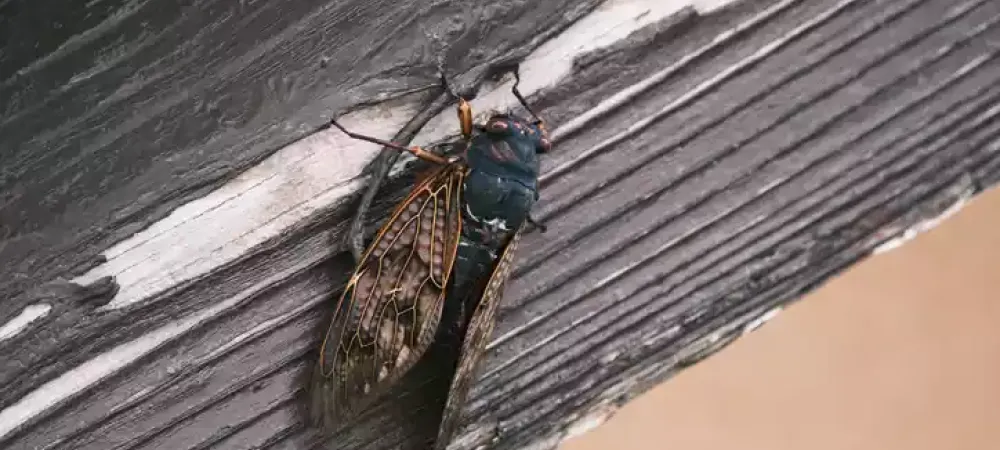Will We See An Influx of Cicadas in Orlando?

In 2024, a fascinating natural phenomenon is set to captivate entomologists, nature enthusiasts, and curious onlookers alike: the emergence of the Brood X cicadas in parts of the United States. These winged creatures, known for their unique life cycle and deafening chorus, spend the majority of their lives underground, feeding on tree root sap before finally emerging from the ground in vast numbers. With a historical presence in the eastern and central regions of the country, the forthcoming return of Brood X cicadas promises to provide a captivating spectacle as a new generation emerges after 17 long years.
What are Brood XIX Cicadas?
Brood XIX cicadas, often referred to as 13-year cicadas, are a unique species of cicadas that belong to the Magicicada genus. These cicadas have distinct characteristics that set them apart from other cicada species.
One notable characteristic of Brood XIX cicadas is their synchronized emergence. They emerge every 13 years in large numbers, typically during the spring season. This emergence pattern is cyclical, ensuring that their population remains stable over time.
Brood XIX cicadas are distributed across the southeastern United States. They are found in parts of Alabama, Georgia, Tennessee, and the Carolinas. These regions provide the ideal habitat for these cicadas, with appropriate soil conditions that allow their nymphs to develop underground for 13 years before emerging as adults.
During their brief adult lifespan, Brood XIX cicadas engage in mating rituals, which include a distinct mating call produced by the males. The mating process leads to the development of eggs, which the females deposit onto tree branches. The hatched nymphs then fall to the ground and bury themselves in the soil, starting the 13-year cycle once again.
What are Brood XIII Cicadas?
Brood XIII cicadas, also known as Magicicada tredecim, are fascinating insect species that emerge in specific states in the United States. They belong to the family of periodical cicadas and are known for their distinct characteristics and emergence patterns.
These cicadas are characterized by their vibrant black bodies, transparent wings, and striking orange eyes. They have a stout and robust appearance, measuring approximately an inch and a half in length. Their unique call, a loud and buzzing noise, is used to attract mates and can be heard throughout the summer months.
Brood XIII cicadas have a synchronized emergence pattern, which means that they appear in large numbers simultaneously. Their emergence occurs every 17 years, making it a fascinating phenomenon to witness. The last emergence of Brood XIII cicadas was in 2007, and they are expected to emerge again in 2024.
The trigger factors for their emergence include soil temperature, specifically when it reaches around 64 degrees Fahrenheit. This temperature threshold signals the cicadas to leave their underground burrows and begin their adult stage. Once they emerge, they mate and lay eggs on tree branches, starting the life cycle anew.
When Do Cicadas Emerge?
Cicadas are fascinating insects known for their distinct mating calls and periodic emergences. These emergences typically occur in cycles of either 13 or 17 years, depending on the species.
The timing of cicada emergencies is influenced by several factors. One crucial factor is temperature. Cicadas require the soil to reach a certain temperature before they can emerge. This temperature threshold may vary depending on the species, but it is typically around 64 degrees Fahrenheit. Other factors that influence emergence include soil moisture levels and the presence of tree roots needed for the nymphs to feed on.
The synchronized nature of cicada emergences is quite remarkable. In areas where cicadas are abundant, thousands of these insects can emerge simultaneously. This synchronous emergence is believed to be an evolved strategy to overwhelm predators and increase the chances of successful mating. The lifespan of adult cicadas is usually relatively short, ranging from a few weeks to a couple of months.
In the year 2024, two broods of cicadas are expected to emerge in different geographic regions. These broods are Brood X and Brood XIX. Brood X is anticipated to emerge in the eastern United States, particularly in states like New York, Pennsylvania, Ohio, and Maryland. On the other hand, Brood XIX is expected to emerge in the southeastern United States, covering states such as Louisiana, Mississippi, and Tennessee.
The last time Brood X emerged was in 2004, which means it will have a 17-year life cycle. Brood XIX, however, emerged in 2011, making its life cycle 13 years. This periodicity and synchronization of cicada emergences make these events highly anticipated among enthusiasts and researchers alike.
Does Florida have cicadas?
Yes, Florida does have cicadas, albeit with a different emergence pattern from the well-known periodic cicadas found in some other parts of the United States. Instead of participating in massive periodic cycles, Florida cicadas emerge every year.
Cicadas are known for their loud and distinctive mating calls, which can reach up to 120 decibels, making them one of the loudest insects in the world. In Florida, these calls can often be heard during the warmer months, typically from May to September, with peak activity usually occurring in June and July.
Cicadas in Florida can be found in a variety of habitats, including parks, forests, and tree-lined streets in urban areas. They prefer trees for egg-laying, and certain tree species are particularly favored by these insects. Oak, willow, hickory, and pine trees are among the types of trees that cicadas often choose for laying their eggs.
With their vibrant presence and noisy mating calls, cicadas add to the ambiance of Florida's natural environment. Whether in wooded areas, city parks, or residential neighborhoods, the presence of these insects is a reminder of the diversity and vitality of Florida's ecosystem.
Will We See an Influx of Cicadias in Orlando in 2024?
Given that Brood X is expected to emerge in the eastern United States in 2024, including states like New York and Pennsylvania, it is unlikely that Orlando, FL, will experience a significant influx of cicadas. Brood XIX, which emerges in the southeastern United States, does not typically extend its range as far as central Florida. Therefore, Orlando may not see a large number of cicadas in 2024.
However, Florida does have its own population of annual cicadas that emerge every year, so residents of Orlando can still expect to hear the buzzing and chirping of these insects during the warmer months. While they may not be as numerous or synchronized as the periodic cicadas found in other parts of the country, Florida's cicadas still contribute to the soundscape of the state and play a role in its ecosystem.
